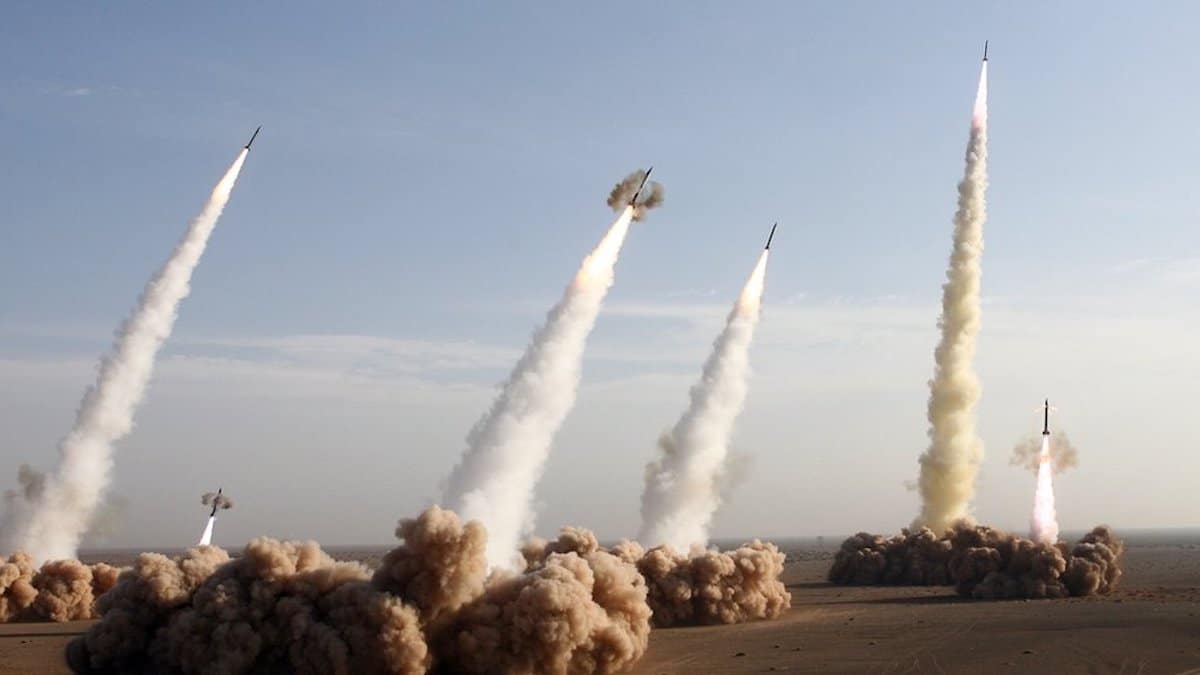2022 Market Predictions: Geopolitical Risk Will Move Up Investors Agenda
Please note that we are not authorised to provide any investment advice. The content on this page is for information purposes only.
Geopolitics will return to centre stage – that’s one of the main 2022 market predictions investors will need to get to grips with.
It seems that in every region there are tensions that threaten to boil over rather than dissipate.
Top of the agenda for European-based investors, but also those in the US and elsewhere, is probably the build up of Russian troops on the borders of Ukraine.
Trouble spots for investors at every turn
But Ukraine is far from being the only potential trouble spot in the world.
The Middle East, not unexpectedly, is a worry, with the intractable stand-off over Iran’s nuclear programme continuing to excite talk of war.
Then there’s the unthinkable that becomes ever more thinkable by the day – the possibility of the US and China going to war over Taiwan.
Less pressing, but still with the potential to draw in larger powers, is the conflict in Ethiopia, Africa’s second-largest country, North Korea and its expanding US- and Japan-threatening nuke portfolio and Bosnia-Serbia conflict threatening to blow up the Balkans again.
Afghanistan faces a humanitarian catastrophe that could transmit destabilisation to its neighbours to the north and east, while India and Pakistan continue to spar over Kashmir.
But the big three flashpoints are in Ukraine, Taiwan and Iran.
Ukraine: War is coming?

US intelligence agencies have been briefing allies that Russia is planning to invade Ukraine in early 2022, or is at least giving itself the option to do so.
Whether this is a chess game centred on applying pressure to extract concessions through non-violent means on Russia’s part is not clear.
Meanwhile, the lengths to which the US will go to defend NATO allies in eastern Europe (Ukraine is not a member of NATO) is not clear either; and the moves the US might make in those directions would appear in Russian eyes to justify its push back against what it sees as an encirclement threat. These imponderables are a recipe for strategic miscalculation.
Europe in a natural gas bind of Russian making?
The impact an outbreak of war in Ukraine would have on energy markets would be immediate and serious.
We are already seeing this in the natural gas market at the centre of Europe’s energy crisis, where Russia is the main supplier and the Nord Stream pipeline is at the centre of a bitter dispute between Russia and the US, with Germany caught in the middle.
The new German government says the pipeline breaks European energy law and so cannot go into operation, signalling a tougher line than that previously adopted by Angela Merkel. Gas prices rose 10% in European markets on Monday.
For Russia, the Ukraine is considered an inviolable territory within its sphere of influence. Indeed, Russian president Vladimir Putin wrote a paper on the subject of Ukraine-Russia relations in which he argued that Ukraine wasn’t really a viable state unless it was partnered with Russia.
Although Russia is a small economy on the world stage, in geo-strategic terms it punches well above its weight.
US president Joe Biden is trying to raise the cost of war in economic terms for Russia, by threatening sanctions that would all but exclude the country from global financial markets.
It remains to be seen if that proves to be a sufficient deterrent. Russia increasingly sees events on its western border as a situation where it may need to strike sooner rather than later, because the military cost will continue to rise if it waits while in the meantime Ukraine ramps up its defences.
Taiwan: will China invade?

Next up is Taiwan. China considers the island territory off the southern shore of mainland China to be an integral part of China. In the view of the Chinese Communist Party Taiwan only became politically separated from the mainland after a civil war in which meddling imperial powers enabled the nationalists to escape to the island.
These same “imperialist” forces have supported Taiwan ever since as a block to reunification and a throne in the side of Greater China.
President Xi Jinping has Taiwan on his bucket list of problems to fix.
But the prospect of invading Taiwan is a daunting one, even for the modernised People’s Liberation Army (PLA) with its “carrier killer” missiles and hypersonic breakthrough weaponry.
Buzzing Taiwanese airspace is one thing, but launching a ground invasion is quite another. The Chinese government may prefer to ramp up diplomatic pressure as a precursor to an economic blockade of the country rather than an invasion.
However, the Chinese government may want to hold back from such a confrontation as it would interfere with the business relations that bind Taiwan and China, despite the geopolitical tensions.
Globalisation has in practice brought Taiwan and China closer together; a marriage of convenience epitomised by Taiwanese owned manufacturing giant Foxconn.
So the sabre-rattling is not risk-free for China. A recent run on long-life foodstuffs in response to bellicose comments from government media outlets such as the hyper-nationalist Global Times, suggests there is great nervousness about war on the part of the general population.
If Weibo social media posts are anything to go by, the vast majority of the population support reunification, but that does not mean people want to risk decades of economic progress and wealth creation in a costly war, in terms of people war materiel and economic dislocation.
And of course geopolitical tensions do not have to play themselves out through war-fighting, even though as Prussian general Carl von Clausewitz pointed out, “war is the continuation of politics by other means”.
Digital yuan: war by non-military means
With the Winter Olympics starting in February, China will be rolling out its digital yuan. The UK’s head of its electronic intelligence agency GCHQ Jeremy Fleming told the Financial Times on 11 December: “If wrongly implemented, it [digital currency] gives a hostile state the ability to surveil transactions. It gives them the ability . . . to be able to exercise control over what is conducted on those digital currencies.”
Although it will surely be some years off before the yuan could come near to challenging the role of the US dollar as the preeminent global reserve currency, the launch of the digital yuan represents a throwing down of the gauntlet.
Against this background of geopolitical competition on all fronts, the potential for the trade war between the two countries to flare up again is also high.
Chinese companies delisting in New York is likely to continue, even while US investment banks seek out profits by opening up shop in China, which they understandably see as a market too big to ignore.
But just as with Taiwan-China relations, economic realities may place limits on how far both the US and China might want to take things. China is after all the largest buyer of US debt.
A weakening of the US dollar would reduce the value of China’s foreign exchange reserves, even if there are small indications that China may be seeking to diversify away from the US dollar by increasing euro and gold reserves.
The final factor to consider – and perhaps the real kicker – is the state of the Chinese economy. History is replete with scenarios where rulers faced with a deteriorating domestic climate in the political and/or economic realm, seek to overcome those problems by turning to war-like adventures.
The systemic risk to the Chinese economy from the implosion of the real estate sector as Evergrande attempts to restructure its debt, could be such that yet another stimulus package from the government fails to right the ship – that makes for a dangerous backdrop against which to gauge the direction of Chinese geopolitical thinking.
Iran: Middle East conflagration threat

Then we come to Iran and its nuclear ambitions, which the country says are purely for civilian purposes.
The Trump administration scuppered the deal that was meant to be keep Iran’s nuclear programme within bounds set by the international community. But that was always a problem for any sovereign country, especially a proud one like Iran.
And besides, as far as Iran was concerned it was the West that ripped up the deal. Consequently, it has decided to move forward with spinning its centrifuges as it seeks to produce sufficient fissile material for a nuclear weapon.
According to a New York Times report in September, it was about a month away from that target, which means Iran may have crossed the threshold that the US and Israel had been so keen to stop it from doing.
However, there is no evidence of a weapon being built by Iran, but Israel is unlikely to sit back and allow such development work to begin or proceed unmolested. And neither is the US for that matter, although the debacle in Afghanistan and Iraq will figure in the calculations of the Biden administration as it seeks to avoid starting another “forever war”.
It is hard to see the US going to war with Iran, but military strikes to take out the industrial infrastructure required to develop nuclear weapons may be a possibility. But that would still open up the prospect of setting the Middle East on fire.
If oil consumers think prices are high now, crude prices could easily double if Iranian missiles start raining down on Saudi Arabia and the Gulf states – not to mention the drone swarms, whose operation it seems to have perfected in conjunction with Yemeni proxies.
Given the reach of the Iranian military, any attack on the country by Israel or the US would have immediate ramifications not just for the crude oil shipping lanes of the Gulf, but for failed state Lebanon, Syria, Iraq where a pro Iranian government still holds sway.
It would be no exaggeration to say that a war with Iran would risk general conflagration in the Middle East, which could lead to a massive economic shock for the world economy.
2022 market predictions: investors face wall of worry
Going into the new year, investors don’t have just Covid, inflation, monetary policy missteps, and possibly overextended equity markets to worry about. But attempting to determine the best ways to invest for positioning an investment portfolio to be bomb-proof where geopolitical turmoil is concerned, so to speak, is tricky.
Energy is probably the most exposed sector in terms of disruption – investors could seek out companies that would benefit from price spikes in oil and gas.
The semiconductor industry is heavily dependent on Taiwan, so a ratcheting higher of China-US tensions that could bring a worse case scenario into view, could lead to a far more severe breakdown in supply chains than Covid has so far delivered.
Chip prices would rocket as a result and South Korea could be a beneficiary as well as other non-Taiwanese-based manufacturers, assuming North Korea doesn’t begin testing nukes again and threatening Seoul.





